What is Wawa? Well, it's like 7/11, but on steroids. It is a chain of convenience stores which can be found in New Jersey, Pennsylvania, and other scattered locations along the east coast. Most are combination food stores and gas stations, which make them a great place to stop at fill up on food and fuel. They offer freshly made hoagies, salads, wraps, juices, and just about anything else you can think of. After grabbing a chicken caesar wrap and some juice, I was on my way.
Much of the pines barrens looks very similar to this, white sugar sand with scattered pitch pine and an understory of scrub oak and highbush blueberry. Though many unique species exist here, it is a foreboding place to herp which requires long hours in the field with little yield. The high humidity from the storm the day before had brought the biting flies out in force, the ticks were also noticeably bad. While driving between sites, I found my first snake of the trip. Unfortunately, it was in the fashion that I hate seeing snakes.
Black Rat Snake - Pantherophis obsoletus
This is the only way I've seen black rats in the pine barrens, whacked on the road. The odd thing is that this snake has no visible trauma to its body, so I'm unsure as to what happened to it. It was still limp, and had clearly not been dead for very long. I stopped and flipped some cover at a few different sites and struck out so I moved on. The weather was warm and muggy and the skies were overcast, it was perfect weather conditions for snakes to be out basking. So I decided to go walk a sandy ridge that in hopes of seeing one of the more impressive species which inhabits the pine barrens. After an hour or so, I spotted this big girl.
Timber Rattlesnake - Crotalus horridus
This large gravid female was only the third rattlesnake I've seen in the pines, I saw one each of the past two years. She was coiled at the base of a large pitch pine and did not move a muscle. Pinebrakes are the ghosts of this region. They are scarce and restricted, and most rarely encounter humans throughout their lifetime in the pine barrens. After admiring her for a few minutes I moved on to another site. After flipping through some cover, I flipped a large board and found this little gem underneath.
Coastal Plains Milk Snake - Lampropeltis triangulum "temporalis"
Coastals are always an exciting find and it was a great way to cap off my first day back in the pines. I had to take off early due to a recognition dinner back up north at the national wildlife refuge. After a good night's sleep, I arose early once again and headed back to the pinelands. I met up with a friend and walked some habitat and after a short while spotted this beautiful snake basking in the morning sun.
Timber Rattlesnake - Crotalus horridus
I fired a few photos of this snake from a good distance to ensure she wasn't disturbed. Research has shown harassment of gravid female timber rattlesnakes can cause them to abandon their gestation sites. Females select locations which are optimum for basking and also to cool off when the weather gets too hot, as thermoregulation is important while carrying young. We moved on and and searched more habitat. Much to my surprise, we found this male corn snake basking in the dappled sunlight.
Corn Snake - Pantherophis guttatus
Corn snakes reach their northern range limit in the pine barrens. I only managed to observe one individual over the previous two summers, so it was exciting to find this handsome fella. After a few quick photos, we parted ways. I moved on to another sandy ridge in hopes of seeing a few more rattlesnakes. I managed to spot this large gracid female coiled in the shade.
Timber Rattlesnake - Crotalus horridus
She was in the blue, and sported some very canebrake-esque serrated chevrons. Pinebrakes have sometimes been compared to the canebrakes of the southeastern coastal plain. Canebrakes usually sport the same serrated chevrons, a rusty dorsal stripe, and a prominent post-ocular stripe on either side of the head. Most snakes in the pines lack these stripes, but some do have faint indications of them. I didn't bother the snake and moved on. About fifteen minutes later, I spotted this big girl laid out in the pine straw.
Timber Rattlesnake - Crotalus horridus
This was another large female. She did not move a muscle and allowed me to get some awesome shots with my zoom lens from a few feet away. Horridus are always an impressive species to encounter in the field and seeing multiple in a weekend was awesome. As I was leaving the area, I heard what some movement around the base of a pitch pine and managed to snag this nasty juvenile racer for a few photos.
Northern Black Racer - Coluber constrictor constrictor
Racers are biters to begin with, but this snake was like a bat out of hell. I don't think I've ever had one bite me as many times as this one did. I got a few quick shots and moved on before I lost too much blood.
As the heat of the day picked up, I went and grabbed some lunch at one of my favorite delis in the pine barrens and then made my way to another site.
This large series of abandoned cranberry bogs is not only beautiful, but it's also fantastic habitat for Eastern Kingsnakes (Lampropeltis getula) and some of the larger turtle species which inhabit the pine barrens. While driving the sand roads whichc criss cross the impoundments, I found several large redbelly turtles out on the move, including one nesting female.
Northern Redbelly Turtles - Pseudemys rubriventris rubriventris
Redbellies are exceedingly skittish for their large size and often drop in from a basking location when you're more than thirty yards away. It was pretty cool to see one up close and to watch one of the females dig for a few minutes. As the weather began to cool down, I went to meet up with a few good friends that I'd herped with over the past two summers in the pine barrens. We drove to a few flipping sites and flipped a few racers under cover. It was an encouraging sign, and about a half hour later we flipped this magnificent sight.
Corn Snakes - Pantherophis guttatus
I don't think any of us were ready for this flip, it will definitely be a memorable one. Corns are scarce in the pine barrens and they carry a state endangered listing in New Jersey, so seeing two in one spot like this was awesome. We gently laid the board back down and moved on. Had that been the end of the night, it would have been a great way to end the day. But as it turns out, sometimes luck is on your side. We moved on to another spot and tried flipping some more cover. I was stoked when we flipped this gorgeous hognose.
Eastern Hognose Snake - Heterodon platirhinos
This large individual quickly retreated beneath a small pitch pine and began to hiss defensively. I don't think I've seen a wilder looking pattern or coloration myself in the wild, other then some bright yellow individuals I've seen in southeast Michigan. The snake did the usual hognose thing and after a short photo session we moved on. Later on, we flipped this gorgeous snake.
Corn Snake - Pantherophis guttatus
After a brief photo session, we moved on as the sun began to set. The humid weather seemed to be ideal for frog activity, and so we headed to a swamp in hopes of seeing one of poster species of this region. We arrived after dark to a cedar swamp which was alive with the sounds of several different anuran species. I heard the characteristic kwonk-kwonk-kwonk and followed it to a small pitch pines and spotted a few of these colorful little fellas.
Pine Barrens Treefrogs - Hyla andersonii
This species is truly stunning. The emerald green is accented by the lavender stripes and yellow mottling on the legs. We ended up seeing quite a few individuals and closed off an outstanding weekend in the field in great way. Despite the hoards of biting flies, ticks, and chiggers, the Garden State holds a special place in my heart and I can only hope to end up there again sometime in the near future.





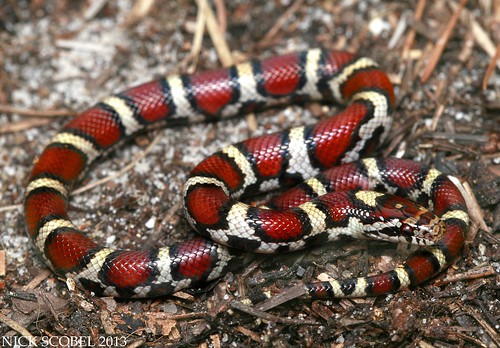

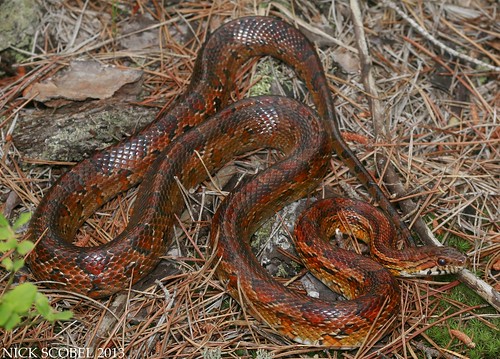
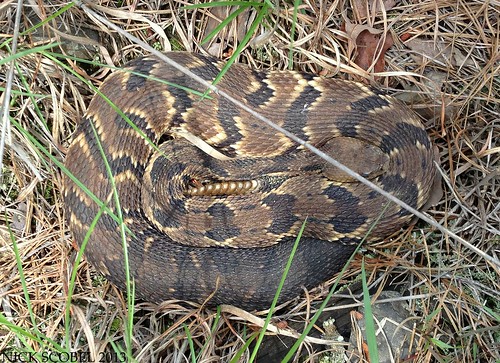
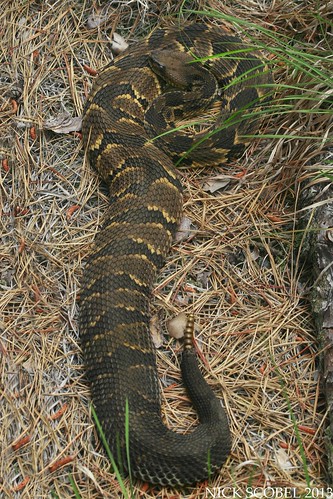

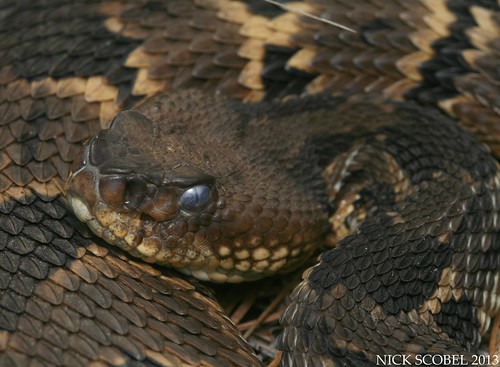


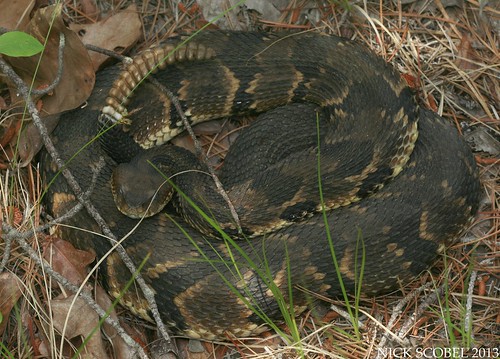
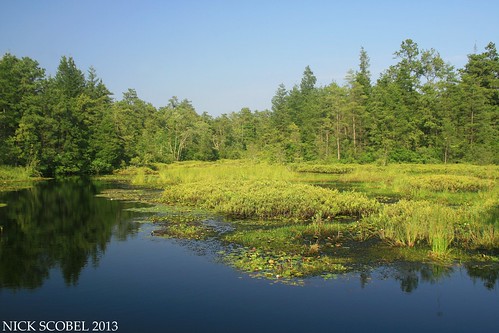

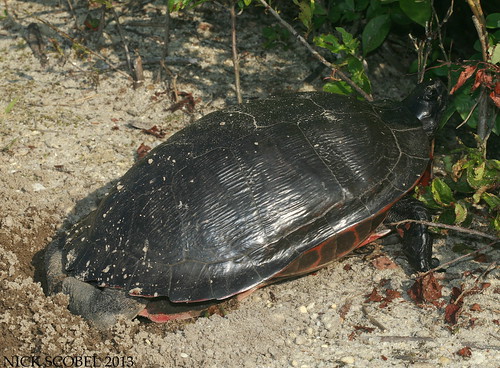


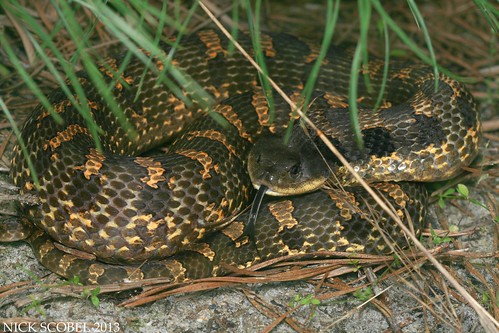
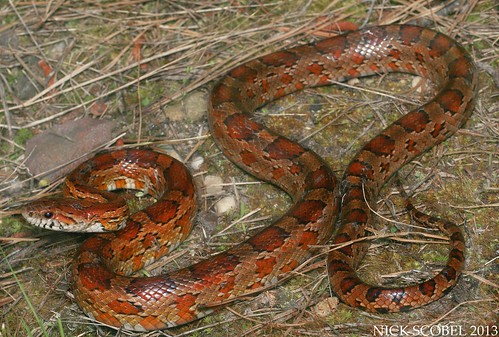
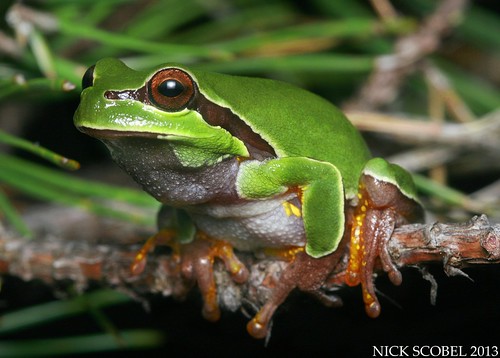
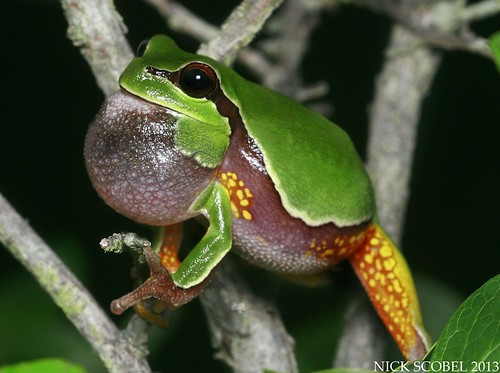
No comments:
Post a Comment